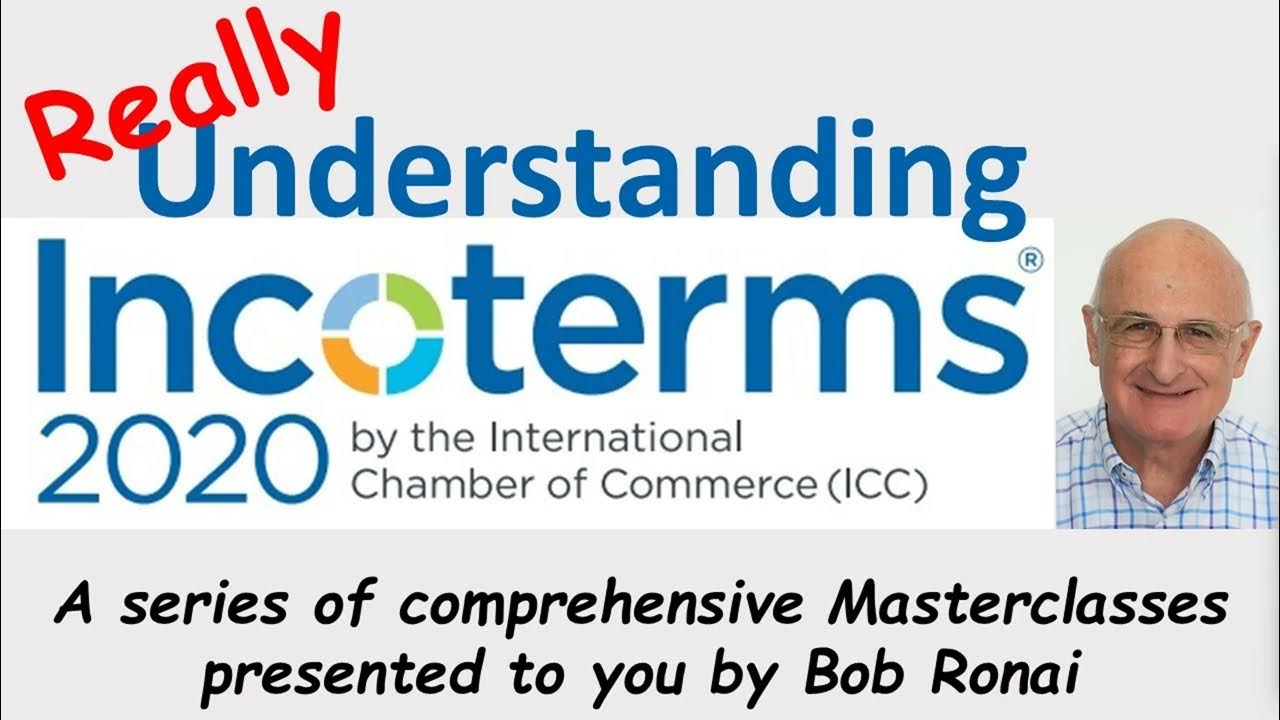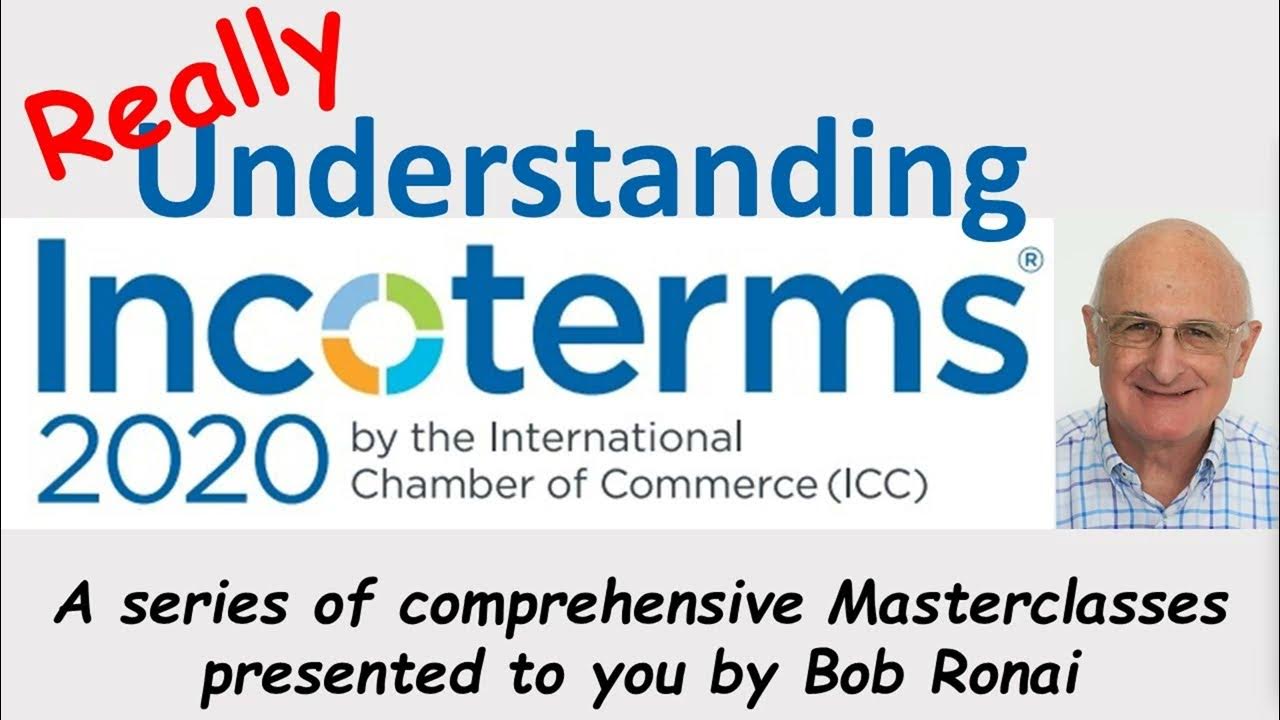Lesson 14 FAS
Summary
TLDRThis lesson dives deep into Incoterms 2020, specifically focusing on the 'FAS' (Free Alongside Ship) rule. It explores complex issues like delivery terms, taking delivery, notices, transport documents, and cost allocation. The seller must deliver goods alongside the vessel at a nominated port, with the buyer assuming responsibility once delivery occurs. The lesson explains legal constructs, practical implications, and the rare usage of the FAS term in bulk or break-bulk shipments. Additionally, it discusses incompatibilities with Letters of Credit and provides insights into the responsibilities of both parties in an FAS transaction. The lesson concludes with a preview of the next term, 'FOB.'
Takeaways
- 😀 FAS (Free Alongside Ship) applies to bulk or break-bulk goods transported by sea or inland waterway, not for containerized shipments or other modes of transport.
- 😀 The seller's responsibility in FAS is to deliver goods alongside the vessel at the nominated port of shipment, but not to load them onto the ship.
- 😀 If the buyer fails to provide the required information (e.g., loading point or time), the seller is deemed to have delivered at the end of the agreed period.
- 😀 FAS delivery is considered complete only when goods are placed alongside the vessel at the loading port, not when they are handed to the carrier or before the vessel arrives.
- 😀 In a string sale, goods delivered under FAS may be resold to another buyer, but this situation is rare and not commonly practiced.
- 😀 The buyer assumes risk once the goods are delivered at the named port, even before the actual loading onto the vessel.
- 😀 FAS transactions require the buyer to give timely notice about transport details (e.g., vessel name and loading point) under the rules of A10 and B10.
- 😀 The seller must provide proof of delivery in a manner customary at the port (e.g., a cargo receipt), but not a transport document like a bill of lading.
- 😀 The seller must bear all costs until delivery under FAS, including those related to export clearance and the provision of delivery proof, while the buyer covers costs from delivery onward.
- 😀 FAS is not compatible with letters of credit (LC) because LCs typically require an on-board bill of lading, which does not apply in FAS transactions where the goods are only alongside the vessel.
Q & A
What does 'FAS' stand for in Incoterms 2020?
-FAS stands for 'Free Alongside Ship,' which means the seller delivers the goods to a point alongside the vessel nominated by the buyer at a named port of shipment.
What is the significance of 'A2' in FAS under Incoterms 2020?
-'A2' outlines the seller's responsibility to deliver goods by placing them alongside the vessel at the port of shipment, either directly or by procuring the goods to be delivered alongside.
What does 'A6' refer to in the context of FAS?
-'A6' refers to the seller's obligation to provide proof of delivery, which could include a transport document or another form of proof, depending on the customs of the port and the nature of the goods.
How does the buyer's risk relate to the seller's delivery under FAS?
-Under FAS, the buyer assumes risk as soon as the goods are delivered alongside the vessel at the port of shipment. The seller is no longer responsible for the goods once they are delivered to this point.
Why is FAS unsuitable for containerized goods?
-FAS is unsuitable for containerized goods because it involves the seller delivering goods alongside the vessel, but containers often involve handing over goods to a carrier before reaching the vessel, which contradicts the FAS terms.
What is the purpose of 'B10' in the FAS rule?
-'B10' requires the buyer to provide sufficient notice of transport-related details, including the vessel name and the loading point, as well as the selected delivery date within the agreed period.
What happens if the buyer fails to provide a loading point under FAS?
-If the buyer fails to provide a loading point, the seller can choose the location within the named port of shipment that best suits its purpose, though this is more of a legal construct than a logistical solution.
What is the role of a transport document under FAS?
-Under FAS, the seller must provide a transport document or other proof of delivery to the buyer. The transport document serves as confirmation that the goods have been delivered alongside the vessel at the port of shipment.
Why is FAS rarely used in practice?
-FAS is rarely used because it is mainly applicable to bulk or breakbulk goods by sea, and the logistical challenges and lack of control over the carrier's movements often make it impractical for most types of shipments.
How does FAS relate to letters of credit (LC)?
-FAS is incompatible with most letters of credit because the seller cannot provide the required onboard bill of lading, which is typically needed in an LC transaction. Instead, the seller should provide a cargo receipt or invoice, but the buyer already controls the goods once they are delivered alongside the vessel.
Outlines

هذا القسم متوفر فقط للمشتركين. يرجى الترقية للوصول إلى هذه الميزة.
قم بالترقية الآنMindmap

هذا القسم متوفر فقط للمشتركين. يرجى الترقية للوصول إلى هذه الميزة.
قم بالترقية الآنKeywords

هذا القسم متوفر فقط للمشتركين. يرجى الترقية للوصول إلى هذه الميزة.
قم بالترقية الآنHighlights

هذا القسم متوفر فقط للمشتركين. يرجى الترقية للوصول إلى هذه الميزة.
قم بالترقية الآنTranscripts

هذا القسم متوفر فقط للمشتركين. يرجى الترقية للوصول إلى هذه الميزة.
قم بالترقية الآن5.0 / 5 (0 votes)






